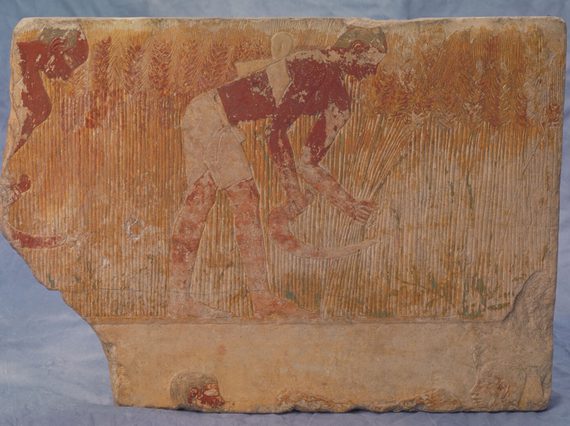
Egypt in North East Scotland
Find out more about ancient Egyptian collections in Aberdeen, Aberdeenshire and Moray.
Aberdeen
Aberdeen Art Gallery & Museums, Aberdeen City Council
As part of five museums and galleries the small collection of Egyptian material here was mainly donated by Aberdeen-born Joseph Bell. The collection includes a number of good examples of pre-dynastic and early-dynastic ceramics (c.4000–3000 BC).
Of note are several decorated vessels dating to c.3500–3200 BC, particularly, a small vessel shaped to imitate a bird. The collection also includes artwork by David Roberts and James McBey.
Please note: No public display of the Egyptian material currently.
Collections size: <50 objects
University of Aberdeen
The University of Aberdeen has its origins in King’s College (founded 1495) and Marischal College (founded in 1593). Each institution held a museum collection, which was ultimately combined into a single institution in the early 20th century.
In 1811, politician and philanthropist Sir Charles Forbes (1774–1849) donated the mummified remains and coffins of a woman named Ta-Kheru to the University collection. This was one of the earliest known donations of Egyptian material in Scotland.
The presentation of objects to the University by academic employees, former students and local aristocrats drove the development of the collection. Dr Robert Wilson (1787–1871) donated several hundred Egyptian objects to the museum and bequeathed money to the University to establish the anthropological museum.
Another graduate, Dr James Grant Bey (1840–1896) and his descendants provided the largest number of objects donated by a single individual in Scotland. Having built up his collection in Cairo, he presented a large portion of his collection to the University, including over a thousand scarabs, which he personally labelled, mounted and catalogued. The collection also includes rare examples of a writing set, a limestone stela dedicated to the Syrian god Reshep, a high-quality example of a painted wooden box coffin from Beni Hassan and an inscribed Old Kingdom offering table.
The University and its donors also supported excavations conducted by the EES, ERA, BSA, Oxford Excavations in Nubia, Deutsche Orient Gesellschaft and University of Liverpool, further adding to the collection.
Please note: No public display of the Egyptian material currently.
Collections size: >4000 objects
Aberdeenshire
Aberdeenshire Museums Service
Aberdeenshire Council Museums collection of ancient Egyptian material comprises of around 30 small objects. This includes fragments of linen, faience beads, amulets and shabtis.
Some of the Ancient Egypt objects originate from the collection of Peterhead-born Adam Arbuthnot (1773-1850). He belonged to a wealthy and important family of landowners and merchants. When he retired from merchant business about 1820, he devoted his leisure to creating a collection of antiquities, coins and natural history. On his death in 1850, he bequeathed his collection to the Provost, Magistrates and Town Council of Peterhead.
Please note: No public display of the Egyptian material currently.
Collections size: <50 objects
Moray
Falconer Museum
Founded in 1871 following a bequest from geologist Hugh Falconer, the museum sits on the High Street in Forres. Two notable highlights of the small collection both depict the cow goddess Hathor: a relatively rare example of painted pottery from the New Kingdom with figurative detail and a small stone stela depicting Hathor in the lower register. The stela is said to come from the area of Deir el-Bahari, an important area for the goddess.
Please note: No public display of the Egyptian material currently.
Collections size: <30 objects